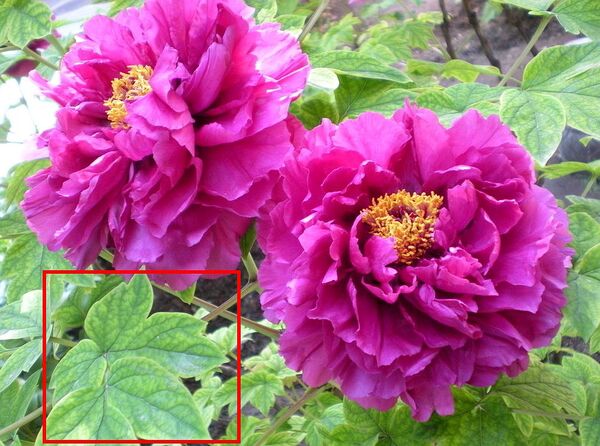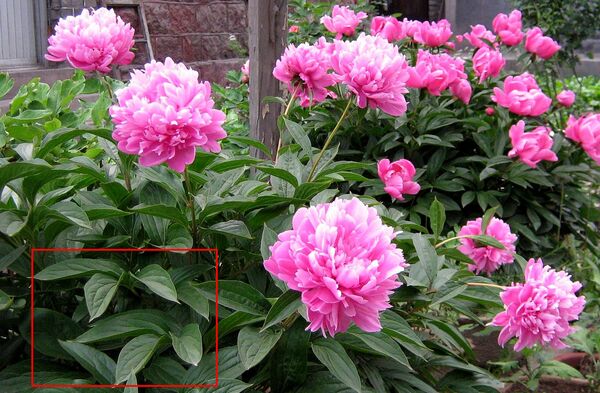Peonies (Paeonia), a beloved genus within the family Paeoniaceae, consist of a wide variety of species and cultivars that have captivated the hearts of gardeners, herbalists, and cultural enthusiasts for centuries. Among the most commonly discussed members of this genus are the tree peony (Paeonia suffruticosa) and the herbaceous peony (Paeonia lactiflora). Despite their striking similarities in appearance, these two species differ greatly in their botanical characteristics, cultivation needs, medicinal uses, and cultural significance. Understanding the distinctions between peonies and their close relatives is essential for gardeners, botanists, and anyone interested in these iconic flowers. This article explores the differences between tree peonies and herbaceous peonies from a botanical, historical, and cultural perspective.
The most fundamental difference between peony species lies in their botanical classification. Peonies generally fall into two categories: herbaceous and woody (tree). These classifications affect their growth habits, life cycles, and environmental requirements.
Tree peonies, or Paeonia suffruticosa, are woody perennials that develop thick, woody stems. These plants are more shrub-like in their growth habit and can reach heights of 1 to 1.5 meters (3 to 5 feet). Tree peonies have a long lifespan, often thriving for 30 to 60 years, and some varieties can live even longer with proper care. They bloom in late spring to early summer, typically around May, and are famous for their large, multi-layered flowers that are often fragrant and come in a wide array of colors, from deep reds to soft pinks and whites.
Tree peonies are native to China, Japan, and Korea, and have been cultivated for over a thousand years. Due to their large, woody roots and stems, they are more resistant to harsh winters compared to herbaceous peonies. This makes them a preferred choice in regions with colder climates.

In contrast, herbaceous peonies, such as Paeonia lactiflora, are non-woody perennials, meaning they die back to the ground after each growing season. Herbaceous peonies typically reach a height of 60 to 80 centimeters (2 to 3 feet), with a lifespan of around 3 to 5 years, although they can be propagated easily. Unlike tree peonies, herbaceous peonies grow from tuberous roots that are softer and more fibrous. These plants bloom in late spring to early summer, usually slightly after tree peonies, around late May to early June. The flowers of herbaceous peonies are smaller and less complex than those of tree peonies but come in equally vibrant colors such as white, pink, and red.
Herbaceous peonies are native to Central and Eastern Asia, as well as parts of Europe. They are more tolerant of drought and poorer soil conditions compared to their woody cousins, making them highly versatile in various garden settings.

While both types of peonies produce stunning, large flowers, the timing and structure of their blooms differ significantly.
Tree peonies are known for their large, luxurious flowers that can exceed 15 cm (6 inches) in diameter. Their flowers often have a multi-layered, ruffled appearance with a rich fragrance. These blooms are typically solitary and more complex, consisting of numerous petals that give them a dense and full structure. The flowering period for tree peonies is early to mid-spring, typically from April to May, depending on the climate.
Tree peonies are often praised for their vivid colors, ranging from deep reds and purples to soft whites and pinks. Some cultivars, like the famed "Luoyang Hong" in China, are revered for their striking hues and intricate flower patterns.
On the other hand, herbaceous peonies have slightly smaller, but still magnificent, flowers that typically measure around 8 to 12 cm (3 to 5 inches) across. These blooms can have simple, semi-double, or fully double petals. The structure is usually less dense than that of tree peonies, offering a more airy appearance. Herbaceous peonies come in a variety of colors, with pink, white, and red being the most common.
The flowering period of herbaceous peonies usually spans from late spring to early summer, but due to their later blooming time compared to tree peonies, they tend to attract attention when the tree peonies have already finished blooming. The bloom time of herbaceous peonies is typically around late May to early June, making them a perfect companion for later-season floral displays.
Both types of peonies hold immense cultural significance, particularly in Chinese and Japanese traditions. However, their symbolism and historical roles vary.
The tree peony is often referred to as the "king of flowers" in Chinese culture, symbolizing wealth, prosperity, and noble status. It is frequently depicted in Chinese art, poetry, and imperial gardens. The historical cultivation of tree peonies in China dates back over 1,000 years, and they were often seen in royal gardens and private collections. The famous "Luoyang Peony" in Henan Province, China, is celebrated for its stunning display during the annual Luoyang Peony Festival.
In addition to its aesthetic value, the tree peony is also deeply intertwined with traditional Chinese medicine, where its root has been used for its purported medicinal properties. Peony root, known as "Mu Dan Pi" in Chinese medicine, is believed to have benefits such as cooling the blood, relieving pain, and clearing heat from the body.
Herbaceous peonies, while admired in the East, became iconic flowers in Europe and North America. Peonies symbolize romance, love, and beauty in Western cultures, often appearing in wedding bouquets, gardens, and as cut flowers. In medieval times, they were also believed to have medicinal properties, with herbalists using the peony for its soothing effects on ailments such as headaches and digestive issues.
In addition to their medicinal uses, peonies in the West became a popular subject in art and literature. Poets and painters, from Shakespeare to modern-day artists, have utilized the peony as a symbol of the fleeting nature of beauty and love.
Both tree peonies and herbaceous peonies have significant roles in traditional herbal medicine. Their roots, particularly those of the herbaceous peony (Paeonia lactiflora), are widely used in Chinese medicine.
Tree Peony (Paeonia suffruticosa): The root bark of the tree peony is commonly used in Chinese herbalism to reduce inflammation, clear heat, and cool the blood. It has also been used to treat conditions such as menstrual cramps, liver conditions, and vascular issues.
Herbaceous Peony (Paeonia lactiflora): The root of the herbaceous peony, commonly called "white peony root," is renowned for its calming and blood-regulating properties. It is often used to treat stress-related conditions, muscle spasms, and digestive discomforts.
Although both types of peonies are highly valued in traditional medicine, they are typically used in different ways based on their specific chemical compositions.
When it comes to cultivating peonies, understanding the needs of each species is essential to their successful growth.
Tree peonies require well-drained soil and should be planted in full sun to achieve optimal growth. They prefer cold winters and may not fare well in regions with excessively warm climates. Because they are woody perennials, they do not need to be divided, and mature plants will require periodic pruning to maintain their shape and health.
Herbaceous peonies are relatively low-maintenance and can thrive in a variety of climates. These plants require well-drained soil and should be planted in full sun. In contrast to tree peonies, herbaceous varieties can benefit from dividing every few years to promote healthier growth and better flower production. Herbaceous peonies are also more tolerant of a wider range of climates, making them suitable for gardeners in both colder and warmer regions.
In conclusion, while peonies share the same genus, their differences in botanical classification, flower structure, cultural symbolism, and medicinal properties set them apart in fascinating ways. Tree peonies are emblematic of luxury and longevity, often associated with wealth, nobility, and Chinese imperial gardens. Herbaceous peonies, on the other hand, bring their own brand of beauty and symbolism, representing love, romance, and elegance in both Eastern and Western cultures. Understanding these distinctions is key for anyone interested in peonies, whether you are a gardener, a herbalist, or simply an admirer of beautiful flowers.
By recognizing the unique characteristics and roles of both tree and herbaceous peonies, enthusiasts can appreciate their deep cultural and medicinal value, while ensuring successful cultivation for years to come.
animal tags: Paeonia-suffruticosa Paeonia-lactiflora
We created this article in conjunction with AI technology, then made sure it was fact-checked and edited by a Animals Top editor.